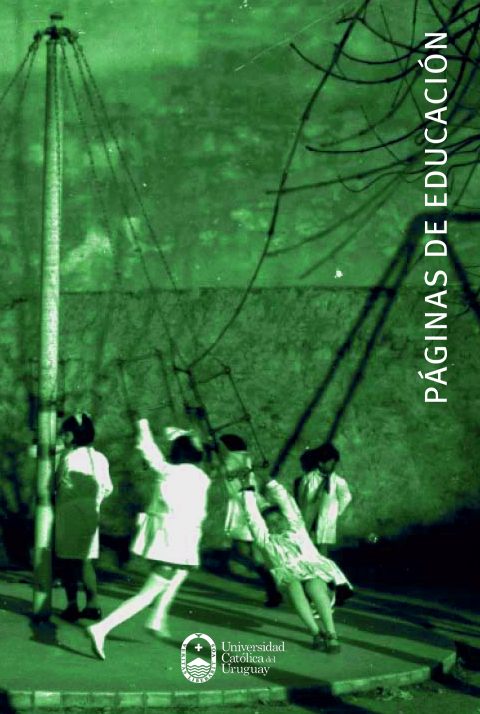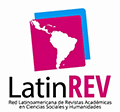Diseño de un cuestionario de satisfacción de estudiantes para un curso de nivel profesional bajo el modelo de aprendizaje invertido
DOI:
https://doi.org/10.22235/pe.v11i2.1632Palabras clave:
Aprendizaje invertido, Aprendizaje activo, Innovación pedagógica, Análisis factorial, Recogida de datosResumen
El presente artículo describe el proceso de diseño y validación de un cuestionario desarrollado ad hoc para evaluar la satisfacción y percepción de los alumnos con respecto al Modelo de Aprendizaje Invertido, aplicado en un curso de Introducción a la Computación de un instituto de educación superior privada en México. El instrumento se sometió a la validación por un panel de expertos, la validación de confiabilidad por medio del coeficiente alfa de Cronbach y la validación de constructo por medio de un análisis factorial exploratorio. Los resultados de este proceso arrojaron un instrumento válido para realizar una evaluación confiable de la satisfacción de los estudiantes en un curso bajo el Modelo de Aprendizaje Invertido.
Descargas
Citas
Bailey, A. (2015). Flipped learning. Training Journal, 5-7. Recuperado de https://www.trainingjournal.com/articles/magazine/september-2015
Bergmann, J. (2012). Myth: Flipped Learning is All About the Videos. Recuperado de http://flipped-learning.com/?p=1064
Bergmann, J., y Sams, A. (2014). Flipped-Learning Toolkit: Getting Everybody On Board [Video]. Recuperado de http://www.edutopia.org/blog/flipped-learning-getting-everybody-on-board-jon-bergmann
Bishop, J., y Verleger, M. (2013). The flipped classroom: A survey of the research. Presentado en ASEE National Conference Proceedings, Atlanta, GA.
De Araujo, Z., Otten, S., y Birisci, S. (2017). Conceptualizing “homework” in flipped mathematics classes. Journal of Educational Technology & Society, 20(1), 248-260.
De Leeuw, E., Dillman, D., y Hox, J. (2011). International handbook of survey methodology (1st ed.). New York, NY: Psychology Press.
D’Souza, M., y Rodrigues, P. (2015). Engaging Millennial Students in an Engineering Classroom using Extreme Pedagogy. Indian Journal Of Science And Technology, 8(24). https://doi.org/10.17485/ijst/2015/v8i24/79959
Fautch, J. (2015). The flipped classroom for teaching organic chemistry in small classes: is it effective?. Chemistry Education Research and Practice, 16(1), 179-186.
Flipped Learning Network. (2014). The Four Pillars of F-L-I-P. Recuperado de http://www.flippedlearning.org/cms/lib07/VA01923112/Centricity/Domain/46/FLIP_handout_FNL_Web.pdf
Flumerfelt, S., y Green, G. (2013). Using Lean in the Flipped Classroom for At Risk Students. Journal Of Educational Technology & Society, 16(1), 356-366.
Franklin, S., y Walker, C. (2010). Survey methods and practices (1st ed.). Ottawa, Canadá: Statistics Canada.
González-Gómez, D., Jeong, J., Airado, D., y Cañada-Cañada, F. (2016). Performance and perception in the flipped learning model: An initial approach to evaluate the effectiveness of a new teaching methodology in a general science classroom. Journal of Science Education and Technology, 25(3), 450-459. https://doi.org/10.1007/s10956-016-9605-9
Gillispie, V. (2016). Using the flipped classroom to bridge the gap to generation Y. The Ochsner Journal, 16(1), 32-36. Recuperado de https://www.ncbi.nlm.nih.gov/pubmed/27046401
Hamdan, N., McKnigth, K., y Arfstrom, K. (2014). Extension of a review of flipped learning. Recuperado de http://flippedlearning.org/wp-content/uploads/2016/07/Extension-of-FLipped-Learning-LIt-Review-June-2014.pdf
Hao, Y. (2016). Exploring undergraduates’ perspectives and flipped learning readiness in their flipped classrooms. Computers in Human Behavior, 59, 82-92. https://doi.org/10.1016/j.chb.2016.01.032
Hernández, R., Fernández, C., y Baptista, P. (2014). Metodología de la investigación. México, D.F., México: McGraw-Hill Education.
Herreid, C., y Schiller, N. (2013). Case studies and the flipped classroom. Journal of College Science Teaching, 42(5), 62-66.
Joanne, C., y Lateef, F. (2014). The Flipped Classroom: Viewpoints in Asian Universities. Education In Medicine Journal, 6(4), e20-e26. https://doi.org/10.5959/eimj.v6i4.316
Johnson, L., Adams, S., Estrada, V., y Freeman, A. (2014). NMC Horizon Report: 2014 Higher Education Edition. Austin, TX: The New Media Consortium.
Johnson, L., Adams, S., Estrada, V., y Freeman, A. (2015). NMC Horizon Report: 2015 Higher Education Edition. Austin, TX: The New Media Consortium.
Martínez, C., y Sepúlveda, M. (2012). Introducción al análisis factorial exploratorio. Revista Colombiana De Psiquiatría, 41(1), 197-207. https://doi.org/10.1016/s0034-7450(14)60077-9
Mavrou, I. (2015). Análisis factorial exploratorio: cuestiones conceptuales y metodológicas. Revista Nebrija de Lingüística Aplicada, 9(4). Recuperado de https://www.nebrija.com/revista-linguistica/files/articulosPDF/articulo_56583a3b9a601.pdf
McLean, S., Attardi, S., Faden, L., y Goldszmidt, M. (2016). Flipped classrooms and student learning: Not just surface gains. Advances in Physiology Education, 40(1), 47-55.
McMahon, M., y Pospisil, R. (2005). Laptops for a digital lifestyle: millennial students and wireless mobile technologies. Recuperado de http://citeseerx.ist.psu.edu/viewdoc/download?doi=10.1.1.504.9796&rep=rep1&type=pdf
Murphy, J., Chang, J., y Suaray, K. (2016). Student performance and attitudes in a collaborative and flipped linear algebra course. International Journal of Mathematical Education in Science and Technology, 47(5), 653-673. https://doi.org/10.1080/0020739X.2015.1102979
Ojennus, D. (2016). Assessment of learning gains in a flipped biochemistry classroom. Biochemistry and Molecular Biology Education, 44(1), 20-27. https://doi.org/10.1002/bmb.20926
Oviedo, H. C., y Campo, A. (2005). Aproximación al uso del coeficiente alfa de Cronbach. Revista Colombiana de Psiquiatría, 34(4), 572-580.
Ozdamli, F., y Asiksoy, G. (2016). Flipped classroom approach. World Journal on Educational Technology, 8(2), 98-105. https://doi.org/10.18844/wjet.v8i2.640
Pérez-Gil, J., Chacón, S., y Moreno, R. (2000). Validez de constructo: El uso del análisis factorial exploratorio-confirmatorio para obtener evidencias de validez. Psicothema, 12(2), 442-446.
Prensky, M. (2001). Digital Natives, Digital Immigrants Part 1. On The Horizon, 9(5), 1-6. https://doi.org/10.1108/10748120110424816
Sams, A., y Aglio, J. (2017). Three ways the flipped classroom leads to better subject mastery. The Education Digest, 82(5), 52-54.
Sarawagi, N. (2013). Flipping an introductory programming course: yes you can!. Journal of Computing Sciences in Colleges, 28(6),186-188.
Thai, N., De Wever, B., y Valcke, M. (2017). The impact of a flipped classroom design on learning performance in higher education: Looking for the best “blend” of lectures and guiding questions with feedback. Computers & Education, 107, 113-126. https://doi.org/10.1016/j.compedu.2017.01.003
Tucker, B. (2012). The flipped classroom. Education Next, 12(1), 82-83.















